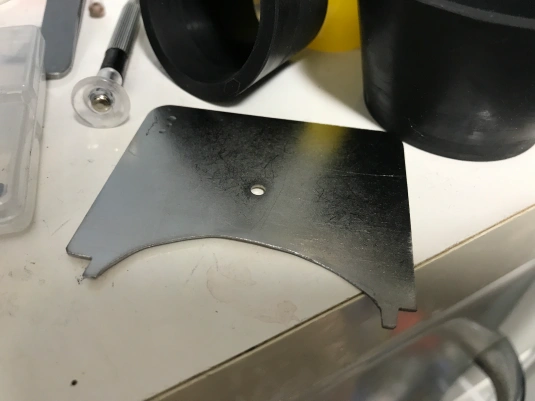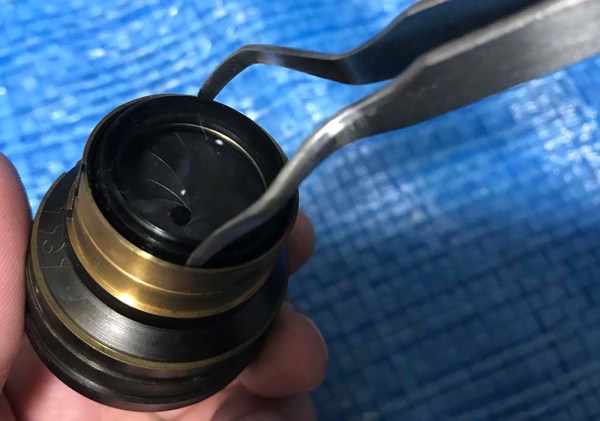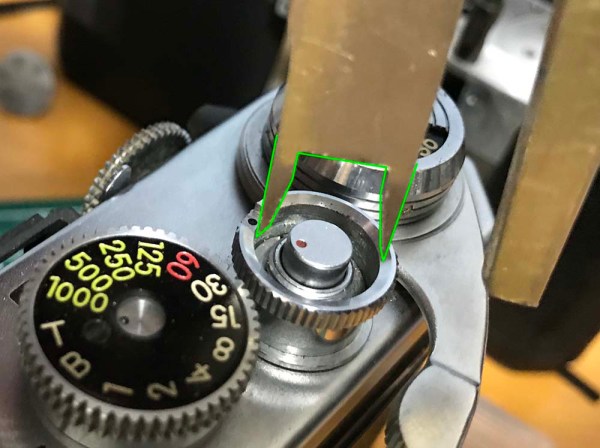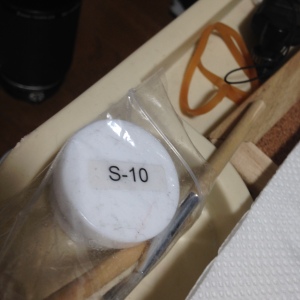Which Screwdriver For Lens Repair Canon
Just like most bobbies, you'll require certain tools to repair or maintain the equipment that yous use. I love repairing broken photography equipment, it helps save the planet and I save a lot of money along the way.
I'll outline to you lot all the essential tools that yous need for repairing lenses and then that yous don't waste your time and most chiefly, money on gear. Many people volition requite you lot the wrong advice on the internet, many from ignorant or arrogant personalities. This has resulted in many people, including me to botch my repairs when I was starting up. I'yard neither ignorant nor arrogant, I'm a generous person with experiences to share and then you won't end up being a camera butcher.

Almost of the tools that you'll need can exist bought in regular hardware stores. However, some are specialized and can only be bought in specialty stores or online. These are good investments, buy the all-time that y'all can afford but do not go overboard and buy something that is insanely expensive only of very limited use.
Luckily, camera repair has plenty in mutual with watch repair, both bargain with precise, small hand-held tools. Going to the watch repair section of your DIY shop can as well be fruitful. I grew up in a watchmaking family so the tools and skills are all familiar to me.
I highly recommend that y'all follow my communication every bit close equally yous perhaps can because tools like spiral drivers seem to be common beyond the board only in reality they come in different types. Using the incorrect driver type can result in a stripped screw head.
I'll never exist held responsible for whatsoever cleaved equipment, tools, gear or your health, please use your common sense and follow condom procedures.
Screwdrivers and Screws:
These are the most-basic of tools but their essential. Never buy cheap ones, I made the mistake a long time ago and bought cheap-Chinese ones, they are flimsy and may harm your gear! I volition testify yous which ones to buy.

First, you'll need a set of precision screwdrivers. These things are dandy for smaller screws. Be sure that you only go JIS (Japanese Industrial Standard) when repairing Japanese equipment. Hobby shops with a mini 4X4 or radio control section should have these and chances are they will be JIS. Japanese brands are also more likely to exist JIS (similar Tamiya). Never purchase inexpensive-Chinese precision screwdrivers, you'll employ these for a long time, the damage caused by using the wrong screwdriver can exist irreversible. If JIS isn't available, become crosspoint drivers. The Philips drivers look like but are different, never employ Philips drivers with your Japanese equipment. The best brand I know is VESSEL, they're not expensive and they're well-made.

You volition also demand precision micro screwdrivers. These micro screwdrivers are essential for screw heads that are too-small for regular drivers. Ever remember to "employ the right tools for the right job". These are VESSEL-brand drivers. You definitely volition want to stick to a brand so I recommend that you stick with VESSEL since they're reliable, inexpensive and of high quality.

For bigger screws, use regular drivers. Be sure to buy ii types for each screw blazon: a long-shafted ones and short shafted ones. The ii types of screws that you'll encounter in camera or lenses are crosspoint and apartment. They are also called plus (+) and minus (-) drivers. Again, and I can never say this enough: stick with VESSEL. The most useful size for plus drivers is 0. The 00 can also be useful from fourth dimension-to-time but 0 is what I utilize the most. These are used for bigger screws like that ones in the bayonet mountain. The longer ones are used for larger screws that are too-tight, using the shorter general-purpose ones will just strip the heads even if you apply the correct size. The long shaft will give you the leverage that you need, a fatter handle will help give you more torque, too. Camera manufacturers love thread lock (Loctite) a lot and they use this affair copiously. Also, since the lenses that y'all'll repair will likely be erstwhile, the screw might just "fuse" with the thread due to corrosion, grime and other nasty things and extra torque is required. Read my commodity on working with bayonet screws to know more most how to handle stubborn screws.
If you think that all flat drivers are the aforementioned then think again, the best ones have parallel edges, they will non mark the slots because of this. They aren't cheap then many people grind the usual ones to make them. I don't have time for this so I spend around $14 for 1 of these. They're a expert investment, it is important to buy the best ones that you tin afford while making certain the ones that you lot bought aren't over-priced.

Yous'll want to search the screws section of your DIY shop for a drove of screws. I'thou not familiar with other Japanese brands but the nigh common sizes that you'll find in Nikons and Nikkors should exist 2mm (M2) and 1.4mm (M1.four), yous'll occasionally find the odd 1.7mm (M1.7) and other sizes, as well. If I didn't make information technology obvious, the measurements I just mentioned pertain to their diameter and not length, so an M2 screw is 2mm across.
Buy lengths from 2mm to 4mm. The screws found in the bayonet mount are most likely 2mmX4mm (M2X4). The smaller ones used in the lens are either ane.4mmX2mm (M1.4X2) or the 1.4mmX3mm (M1.4X3). In that location'll exist rare cases when you'll meet the odd one.7mm (M1.7) screws, these screws are used internally in parts where actress-strength is required similar in the helicoid keys or to mount the optical assemblies.
Another important matter to accept notation is to only buy apartment caput screws with a very low head since you lot don't want the heads to protrude in almost cases.
Set screws (grub screws) are those tiny screws that don't have a flared head. They're special and should be handled with intendance. They're also very brittle as they can pause nether stress. These cannot be bought hands and tin only be bought from special manufacturers.
Specialized Tools:
Repairing cameras or lenses crave special tools but like how spotter repair requires special gadgets. Most can be made from scrap metallic, some will cost you a bit because they're specialized and the market place for them is small. Don't buy the cheap-Chinese ones from the net, they accept flooded the marketplace recently and they will practise more harm than good.

The workman's compass is used by other trades such as leather-working or engineering science. Good ones are expensive, I purchase the High german ones as they're the best. Exist certain to buy very good ones, inexpensive ones may slip and cause damage. Make sure that the ones you'll purchase isn't going to slip and has a adept tension locking screw. They're used to twist open retainers. Anything that has holes or slots at opposite ends indicate that this tool is needed to open it. I usually modify these by angle the tips in-or-out to fit sure tasks. The time may also be rounded with a file to prevent impairment. I own several of these, some are long while some are curt.

The lens opener or lens spanner is seldom used but is so essential that you lot will desire to purchase a good fix. The workman's compass has the same general role but in that location will exist times when a lens opener is the right tool for a job. The cheap ones can be scary since the locking screws holding the points can be flimsy. If the part that you need to admission is inside the barrel or is too narrow for this tool then the workman'southward compass is the right tool, not this. I see many cheap-Chinese ones, they're flimsy and they bend. Avoid them, become the best ones that yous tin can purchase like the one you see here. If not, make sure it has a rectangular cross-bar and not circular ones. The round ones will not agree their shape when you bend them and will skew nether pressure.

These are called friction wrenches. These are basically just rubber stoppers that come up in different diameters with a hollow core. These are used to twist open up the metal or plastic front rings holding the front chemical element with friction and torque. While I got these as a fix and I strongly recommend that you do the same, you tin also mode some yourself by using the rubber stoppers that hardware stores sell to put on the feet or bases of chairs or metal pipes. Merely make sure that the middle part volition never touch annihilation.

This is a lens sucker. It sucks the glass while you remove or identify them into their housings. Some elements that are positioned also-deep into the barrel like the case of longer lenses will require these to admission and put them back. Make certain that the condom part that come in contact with the glass is always clean. This is also a common spotter repair tool to concur the crystal.

Buy the best blower that you can afford, you'll want a strong burst of air to clean any fibers from the surface of your lens or to remove junk and bits of metal from whatsoever that y'all are milling.

This is a pipe-key. It's used to turn rings that accept slots in them, they're the best tool for the job only information technology tin exist hard to source pipes with the right size. I usually mill these particularly for expensive equipment where I don't want to leave whatever marks. It's important that you make one from brass or any metal that'southward strong-enough merely isn't likewise-hard every bit to mar the surface of your gear. It is a highly-specialized tool and is ordinarily only used for a certain role of the equipment you're repairing, it normally can't exist used with other things.

This is an alternative to a pipe-key. This can be easily made and can be used again with annihilation so long as they will fit. Read this commodity on how to make a pipe key culling to begin making 1.

A lens vise is used to repair a dented filter band. Read this commodity on how to utilise a lens vise to meet how dented front end rings are repaired. Alternatively, you can alter a pair of pliers and weld several sections of pipes to achieve the same upshot simply that'southward a bit more risky. I as well apply a male-female wooden die and whack the broken role with a mallet to bring the dent back-to-shape.

This is DIY lens spanner. It is hands fabricated using fleck materials and can be handy if you need remove a retainer ring seated deep-inside something and is out-of-achieve using a compass or you don't want to scratch annihilation inside by using a metallic tool. Read more about this tool here in this commodity on how to make a DIY lens spanner!

This tool is very important for those who wish to repair before Nikons. This A/R ring opener is needed to remove the lock for the shutter push guard. I fabricated an article on how to create and employ an A/R ring opener.

Simply buy grease that'due south made specially for lenses, using the wrong type will result in the grease migrating to parts of the lens that don't need information technology and may stiffen or run on extreme temperatures. I use 2 types of grease, one for general use like this S10 grease and another 1 that's a bit thicker if I want the helicoids to be stiffer. I consider this S10 grease to exist a general-purpose grease and so I use this for the majority of my lenses.

Ever remember that you lot should never ever mix grease of different types together as this will alter the chemical science of the grease. You'll need to clean whatever surface from the former grease and other impurities before you apply your new grease. The camera manufacturers use different kinds of lubricants for unlike parts of the lens but I use the same blazon of grease that I practical to the helicoids equally my full general lubricant and then that there will never be a chance of anything else mixing with the helicoid grease. Recall never to apply besides much grease or your lens volition exist oily again in no-time. Another rule I follow is to lubricate anything that has metal-to-metal contact and move regularly similar the discontinuity band, springs, bushings and helicoid keys.
You'll only need shutter testers when you want to repair cameras. Be sure to buy ones that has at least 2 sensors at each border of the frame, ane for the opening curtain and some other for the closing mantle. Those with one single sensor is only good for lens-shutters or leaf shutters. The i you see in my video just has a single sensor, I employ another one with multiple sensors and I cannot recommend the ones like you see in my video. Never ever purchase those testers that base their readings on sound, they're by and large a waste material of money. If anybody told yous that they can judge a shutter's timing by-ear, they must be high with something. That's BS, I want to know what pipage they're smoking.
These are the more-common tools that I apply for camera and lens repair. It's important to use the correct tool for the chore to preclude any accidents. Your collection of specialized tools will grow as you get more involved with this hobby.
Other Tools:
Hither are some more equipment that will be useful for your hobby. They are important and y'all can source them from just about anywhere.

Lens tissue is valuable for cleaning a lot of things. Remember never to apply the same tissue that y'all used to wipe metallic surfaces to wipe anything that is glass. Another is to never wipe your drinking glass using a dry tissue. While these are soft, they may be abrasive enough if dry. Likewise blow information technology with your blower earlier wiping. Lens tissue is lint-free, yous tin can also use a soft rag, the same ones used for wiping lenses but those aren't disposable.

You will need several types of tweezers and you will also want to buy ones that aren't made of metal. I have several pairs of plastic ones, the expert ones aren't cheap merely they're perfect for handling fragile parts such as the iris.

You'll need several types of solvents, both polar and not-polar ones. This is a very controversial topic because some people don't similar the idea of using a petrol-based solvent naphtha. I use them because some stuff will only react to a not-polar agent. Just exist careful and you should be OK. Alcohol is really skillful for cleaning things and I take a vat filled with alcohol then I can soak a office that'south muddied to disinfect it. Be careful when handling these, you lot should never utilise these with delicate parts such as cemented groups. Ever accept acceptable ventilation when using solvents or you'll get high.

Acetone is invaluable equally a solvent, what you see here is definitely too much for hobby-use but it's industrial-course and I cannot find a smaller container.
Shellac is great for utilize as adhesive when bonding leatherette and other soft materials like cloth or felt. I also utilize it as a sealant and securing parts such as screws. It'due south inexpensive compared to Loctite just information technology isn't as potent. One way to thicken it is to burn a small amount of information technology in a metal container or just allow the solvent evaporate for some time. Yous can besides apply several coats if you need the shellac to exist thin-enough to exist brushed to a surface to ensure an even-glaze. Quondam cameras use this to bond defunction to the shutter, it'south tough and then long as you lot know how to apply this properly. Similar contact cement it is all-time applied to both sides and cured for a short fourth dimension until sticky before application.

A Dremel and its stand (Dremel Workstation) is handy if you need to drill or grind things. I apply it as my grinder when I demand to mill new parts or change existing parts. Sometimes, you'll need to apply this to drill a hole in a stripped screw'south head and use a screw extractor to safely remove a stripped screw. It is worth mentioning that you'll demand special bits for different jobs.

You will also need generic tin containers to put your cleaning fluids or merely to organize parts then that they do non get lost.

This is a micro screw-extractor for removing stripped screws. Just buy the type that has a grooved point that bites-into the pigsty drilled into a stripped screw. Never ever purchase any contemporary screw-extractors such as Moody Tools' screw extractors, they're expensive and useless. Merely buy the ones that look and role the aforementioned as the i in the picture above. This is of import.
Here are the other tools that I use:
Drill bits for drilling or for using with hand taps and the screw extractors.
Hand taps for fixing worn threads or for making new screw holes.
Denatured alcohol for bathing or dipping your metal or plastic parts prior to concluding wiping to remove lighter fluid rest, lacquer, oil and crud.
Nail smooth remover/Acetone is important for softening the seals that the Japanese manufacturers use.
Q-tips for obvious reasons.
Hydrogen Peroxide & Ammonia for killing fungus. Mix in equal parts. You can likewise add a stiff vinegar to make information technology more strong. Read my post on how to remove fungus from your lens to discover out more well-nigh this.
Cerium Oxide for polishing scratched glass surfaces.
Lens cloth for doing the final wiping of the glass before reinstalling them.
LED lamp to inspect if you left any fibers in the glass and also to illuminate your work surface area.
Files and sandpaper for parts modifications and fabrication.
Rubber gloves to help you grip things and protect your hands.
Condom mallet, because sometimes some things just need a good whack!
Rubber bottle opener, they wait like oil filter wrenches only fabricated of some kind of hard condom. They're groovy for unscrewing stubborn lens barrels.
Multi-meter to diagnose electronics.
Hobby knife for cut things.
Contact cement for gluing leatherette and prophylactic parts.
Nail shine for securing parts. Lacquer pigment is also keen for this.
Micro-meter for precise measurements.
That's all that I tin think for at present. In that location are more than things that I use but they aren't what I would call essential. To be honest, most of the things that y'all see listed hither are optional and are only used for certain situations. You lot're not going to be needing most of them every fourth dimension merely it's good to accept them handy just-in-case.
Conclusion:
These are simply some of the things that I commonly use for repairing cleaved lenses and cameras. If you lot've been repairing things so chances are you're already familiar with many of the things that I listed or y'all may have them in your kit now as you read this. If you don't, just purchase or make them as yous move-forward into this hobby and you'll acquire a collection of tools in no time. Ric.
Assistance Support this Blog:
Maintaining this blog requires money to operate. If y'all think that this site has helped you or you lot want to show your support by helping with the site'due south budget, y'all can brand aminor donation to mypaypal.com (richardHaw888@gmail.com). Coin is not my prime motivation for this web log and I believe that I take enough to run this but you can aid me brand this site (and the companionfacebook page) grow.
Buy me a whorl of film or a burger?
Give thanks you very much for your continued support!
$2.00
Helping support this site will ensure that this will exist kept going as long every bit I have the time and free energy for this. I would appreciate information technology if you simply leave out your proper name or details similar your country's proper name or other information so that the donations will totally be anonymous. This is a labor of love and I intend to keep information technology that way for equally long equally I tin. Ric.
Which Screwdriver For Lens Repair Canon,
Source: https://richardhaw.com/2015/12/23/camera-and-lens-repair-essentials/
Posted by: smithobby1983.blogspot.com


0 Response to "Which Screwdriver For Lens Repair Canon"
Post a Comment